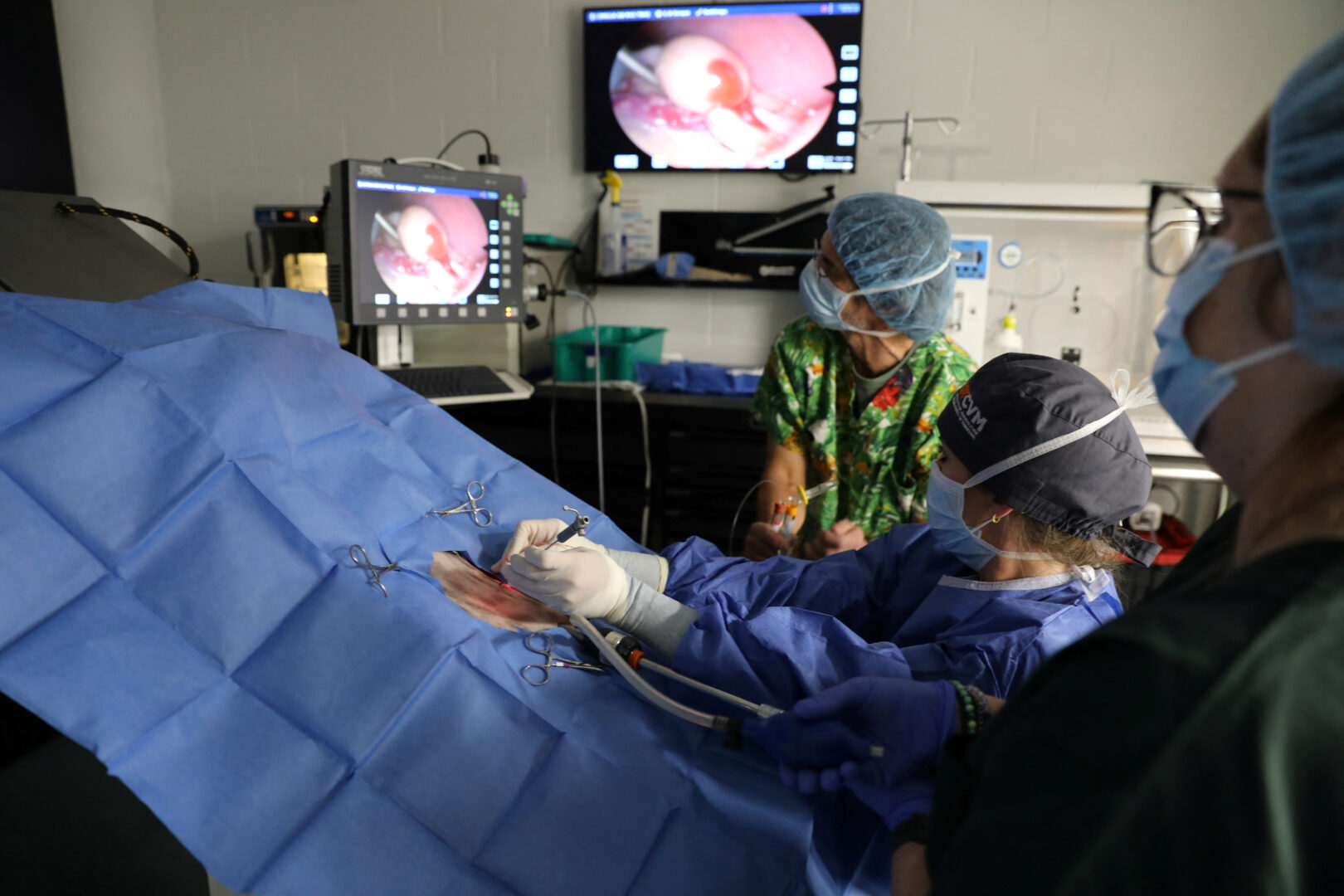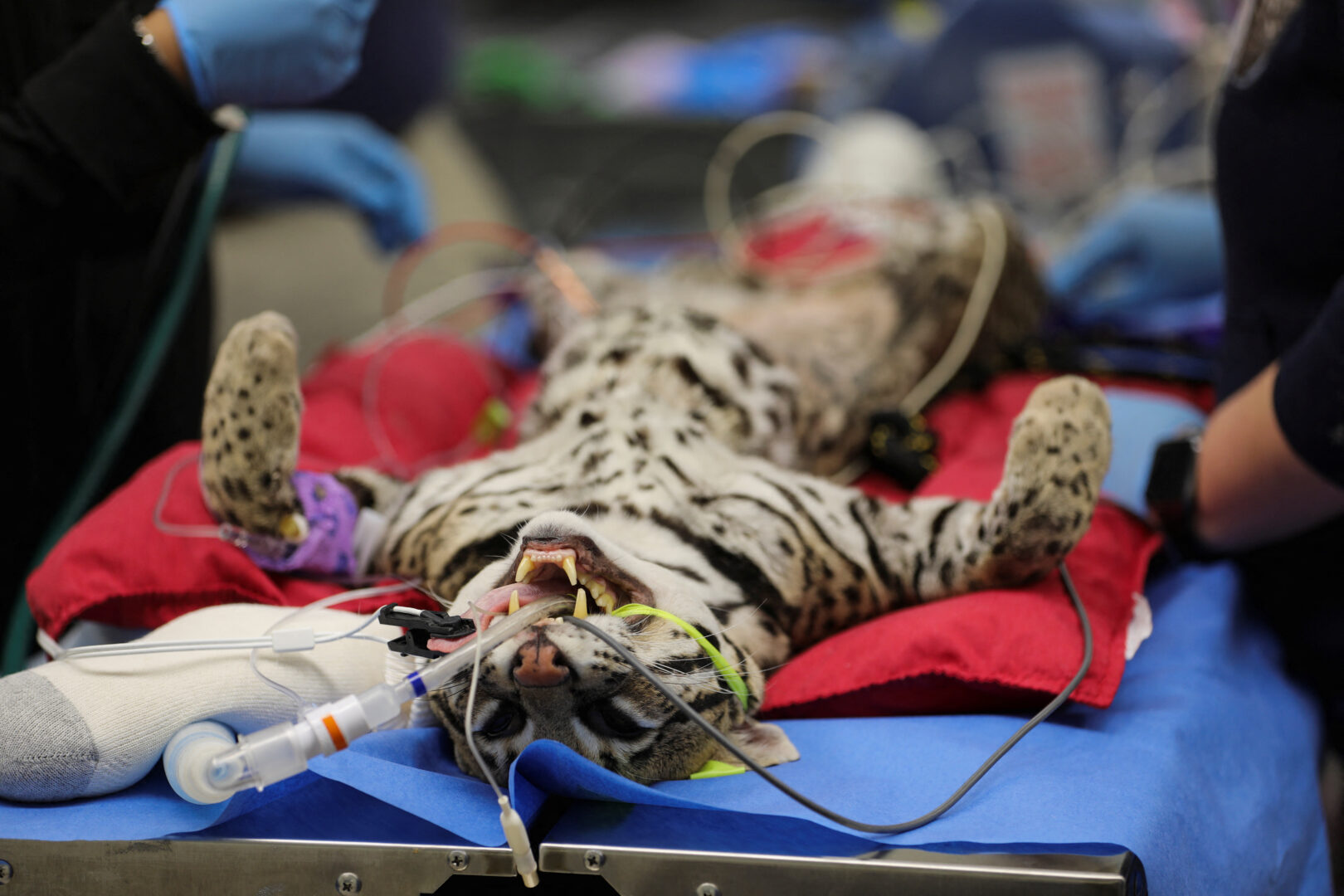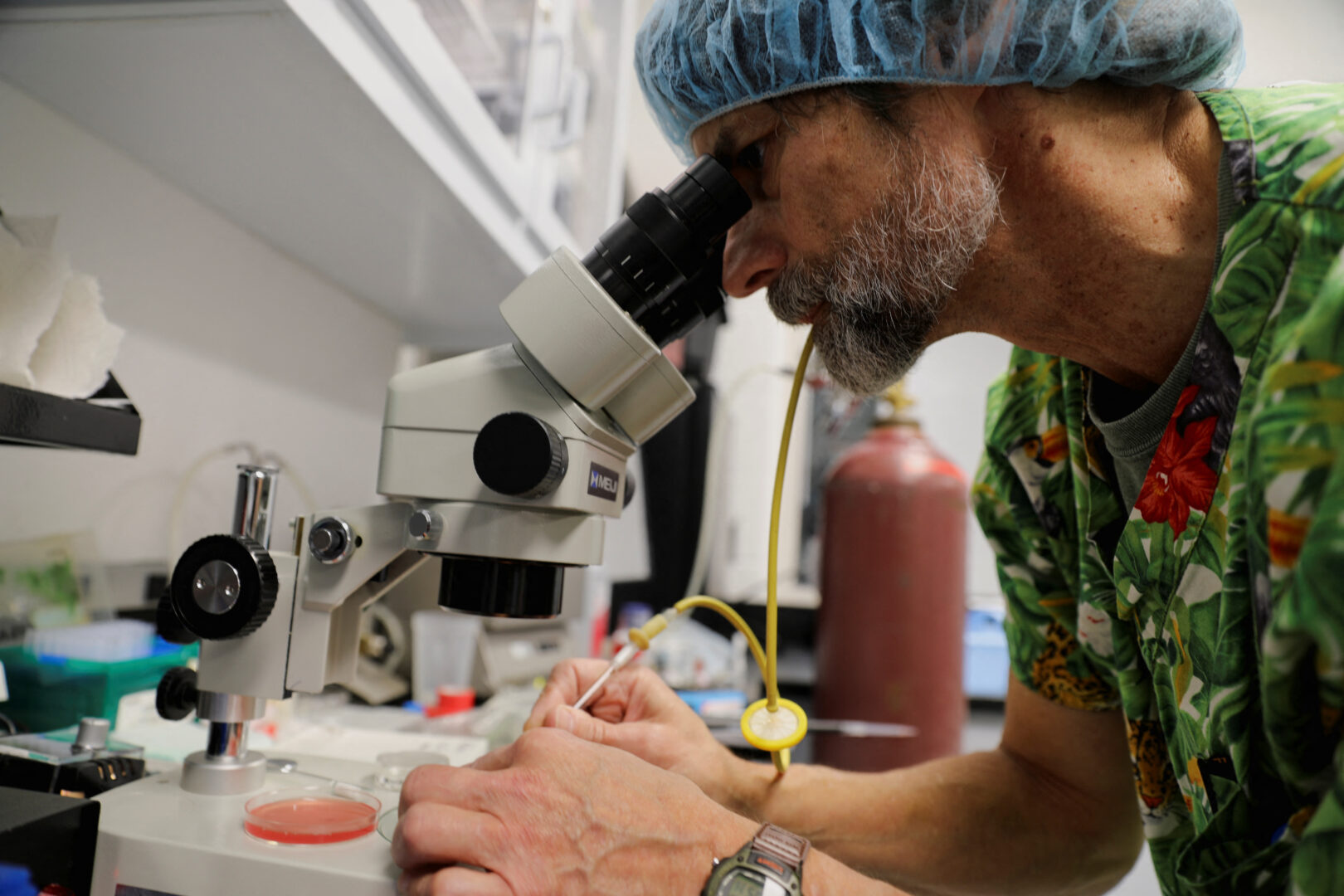Scientists Struggle to Save Endangered Ocelots in the US
In a race against time, scientists are working to revive the dwindling ocelots population in the United States. With fewer than 100 of these wild cats left in two small breeding populations in South Texas, researchers are turning to fertility treatments and conservation efforts to ensure their survival.
Declining Numbers and the Role of Human Impact
Ocelots once roamed the southwestern US in large numbers, but habitat loss, urban expansion, and hunting have driven them to near extinction. Listed as an endangered species in 1982, the US population is now restricted to the thorn scrub habitat of South Texas.

Dr. Ashley Reeves, a research veterinarian at the East Foundation, explains that human activities have been the primary cause of the ocelot’s decline. “When the fur trade was booming, they were hunted for their beautiful coats. Now, roadways pose one of the biggest threats, leading to frequent fatalities,” she said.
Challenges in Breeding Ocelots Through Science
Since 2021, researchers have attempted to breed ocelots in captivity using sperm from wild males. Led by Reeves and Dr. Bill Swanson of the Cincinnati Zoo, the team has tried two fertility methods:
- Artificial insemination (AI) – Directly implanting collected sperm into a female’s reproductive tract.
- In vitro fertilisation (IVF) – Fertilising eggs outside the body and implanting viable embryos into a female.
Despite performing 13 AI and four IVF procedures, no viable pregnancies have resulted. Swanson believes genetic factors such as inbreeding, environmental stress, and low sperm motility have played a role. Unlike domestic cats, which produce multiple kittens per litter, ocelots typically give birth to just one kitten at a time, slowing reproduction.

A recent attempt in December at Texas State Aquarium saw eggs extracted from a five-year-old ocelot named Milla, but none developed into embryos. A later AI attempt at Houston Zoo with a 12-year-old female ocelot, Genoveve, also failed, as she showed signs of heat two months later.
Conservation Efforts and Future Plans
Despite setbacks, researchers remain committed to saving the species. Reeves and Swanson emphasise that each attempt provides valuable insights into improving ocelot breeding techniques. The goal is to combine captive ocelot genes with wild ones to increase genetic diversity.

In March 2024, the East Foundation and the US Fish and Wildlife Service approved a safe harbor agreement, allowing ocelots to be released on private lands in South Texas. This initiative enables landowners to maintain their operations while providing a protected habitat for the cats.
Over the next few months, researchers will trap wild male ocelots to collect sperm for future fertility attempts. By year-end, a facility in Kingsville, Texas, will be built to house ocelots, provide medical and reproductive care, and prepare young ocelots for life in the wild.
Why Saving Ocelots Matters
For Swanson, the fight to save ocelots extends beyond the species itself. “Just look at the cat – why wouldn’t you want it to survive?” he said. “Saving the ocelot means protecting its entire habitat and ecosystem, which supports countless other species and helps keep our planet balanced.”
With inputs from Reuters


